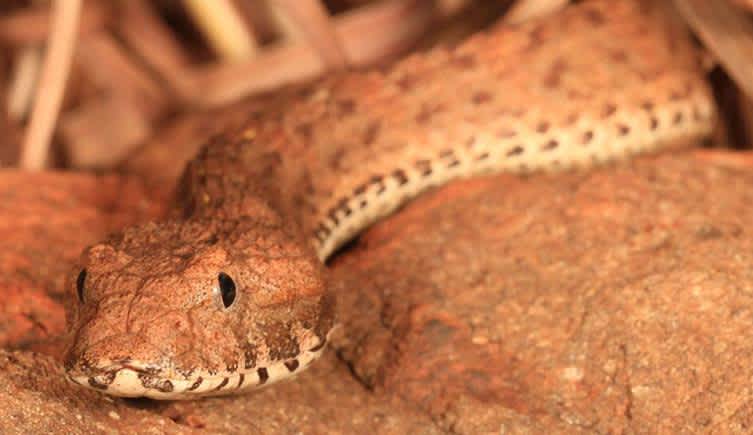Scientists Discover New Species of Extremely Venomous Death Adder
OutdoorHub Reporters 09.16.15

A team of researchers from Bangor University and the Western Australian Museum recently identified a new species of the highly venomous snakes commonly called death adders. The snake, which was discovered in the Kimberley region of Western Australia, was officially designated Acanthophis cryptamydros, the Kimberley death adder.
It may not look menacing with its light coloring and 24-inch length, but the snake is a highly capable predator. According to a news release from the Natural History Museum, the Kimberley death adder is a “sit-and-wait predator” that prefers to ambush small prey rather than actively hunt.
New snake species discovered in Australia, already endangered http://t.co/lleQW7hYW5 pic.twitter.com/jmeObp9p5F
— Wildlife Articles (@wildlife_posts) September 6, 2015
Like most death adders, scientists believe the new species is found across Australia, New Guinea, and nearby islands. The snake is considered relatively rare—but that does not mean that they are not dangerous. Death adders can be especially problematic for humans because unlike other snakes, they rarely shy away from people. While other venomous snakes will leave at the first sign of human intrusion, death adders will instead wait until whatever causing the commotion is close enough to strike. That is why early settlers first called the snakes “deaf adders” under the belief that they could not hear. However, the potency of their venom and a reported 50 percent fatality rate from a bite led to their new and much more ominous name.
Lethal incidents are much rarer now due to the existence of antivenin, but experts are still wary of these dangerous critters.
A new, highly venomous death adder species has been discovered in Kimberley Region! http://t.co/qE5arUYtJ4 pic.twitter.com/aROXmHVe1M
— Australian Museum (@austmus) September 2, 2015
Despite its relatively recent discovery, the death adder may already be on its last legs. Scientists say that the snake is so rare because it may be dying due to another toxic critter in the region: cane toads. These toads carry small poison glands in their body and are toxic when consumed whole, as they usually are by snakes. Cane toads are not native to Australia but were imported as a form of pest control. Due to their natural adaptability, the cane toads have become a pest themselves and now threaten native wildlife.
“It looks like populations of death adders in general are declining in the area and there are records of them eating these poisonous cane toads. It’s potentially a big threat,” said Simon Maddock, the graduate student that led the study.

